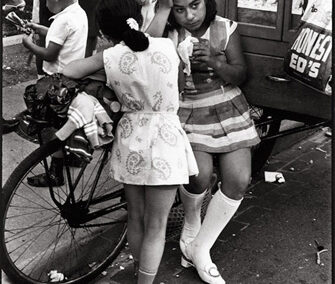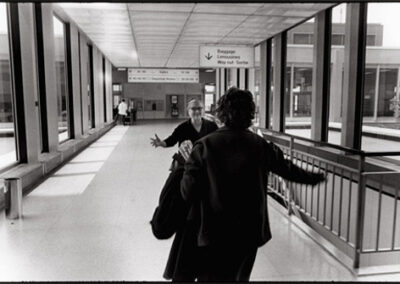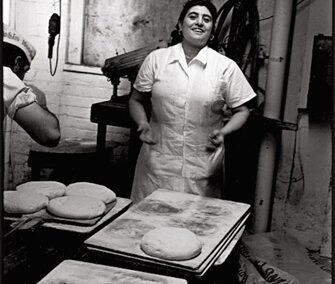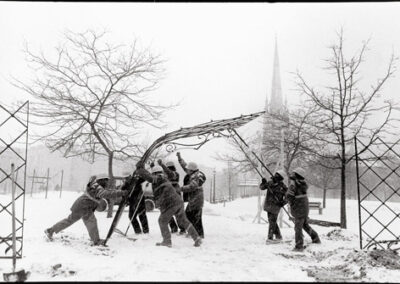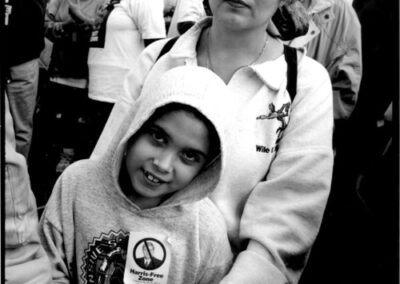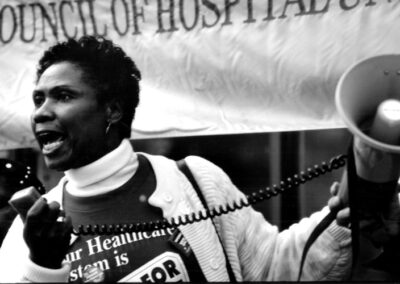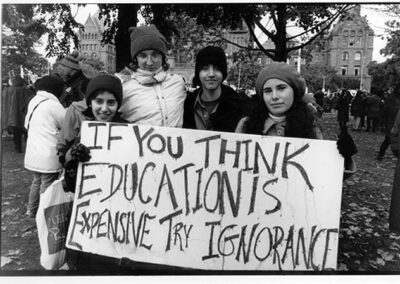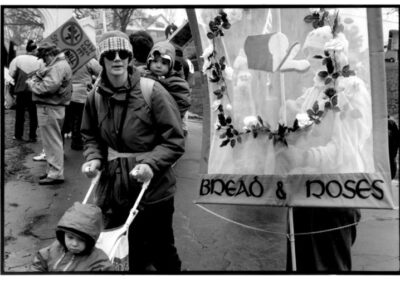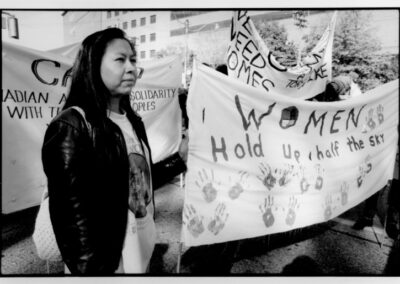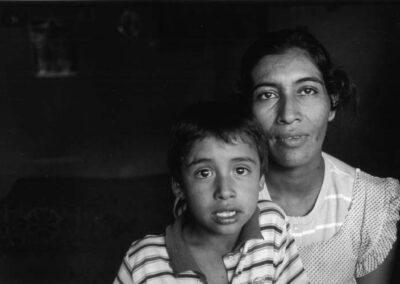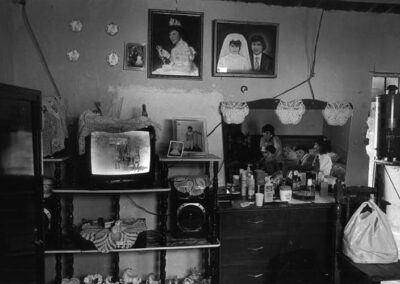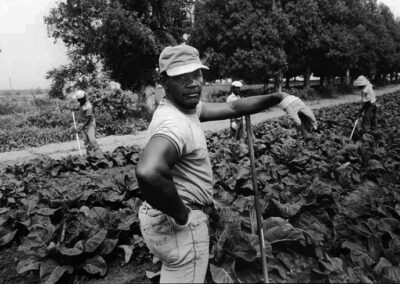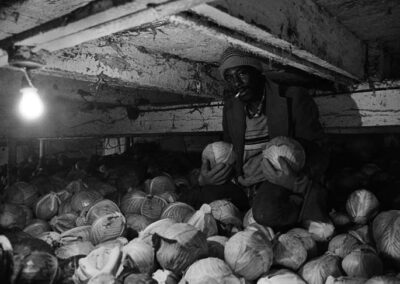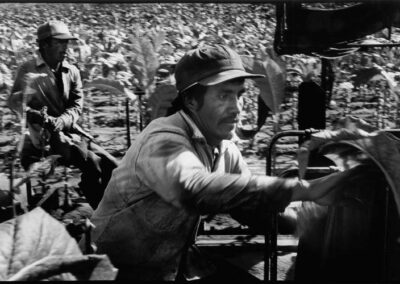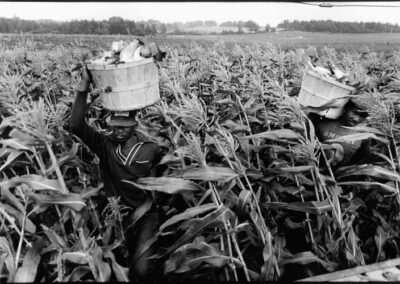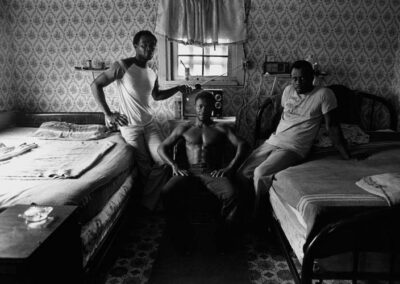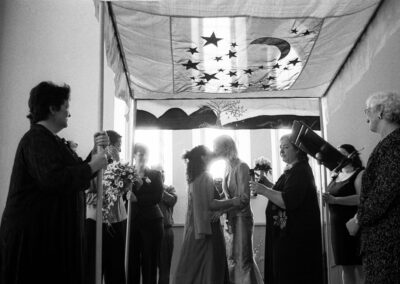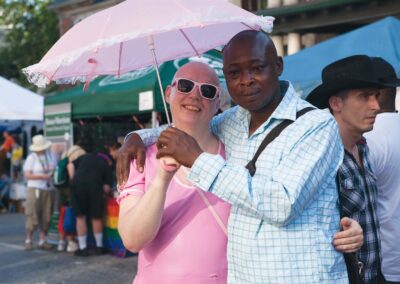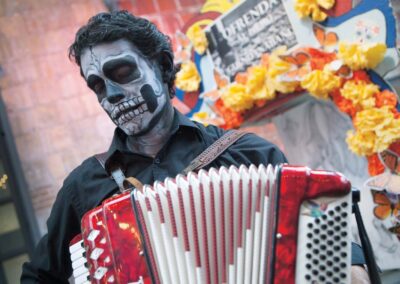Our next Artist You Need To Know is Vincenzo Pietropaolo.
Pietropaolo is a documentary photographer who captures his subjects and the situations they exist within with a strong sense of empathy and the historical moment, straddling the ideas of the personal experience of the subjects and where they stand in a larger social and historical sense.
“I photograph the human condition. Photography is a way of life for me, like an innate language. It is the unceasing search for those ordinary moments that resonate with the timelessness of lives lived, a simple gesture or momentary glance perhaps, all those little miracles of daily life that move us to a deeper appreciation of human existence as individuals, and propel us forward collectively toward the realization of greater social goals.”
The images below are from the series and book Not Paved With Gold : Italian-Canadian Immigrants in the 1970s. More of this project can be seen here.
Pietropaolo lives and works in Toronto : he and his family emigrated there when he was a child from Calabria, Italy (the family briefly returned to Italy, but fully settled in Canada in 1963). He is primarily self taught : “I discovered photography in high school, when I joined the camera club. I was rather shy and reserved, and I discovered that through the camera I was able to express myself – record things, look at things in a different way because you had to create compositions within the frame. I was captivated, and especially when I saw the first pictures being developed. It was like sheer magic. I realized that the camera was a tool for witnessing life around you.” (from here)
He began to create images in the 1970s that were documentary experiences of his city. Although he took classes from both York University and University of Toronto, Pietropaolo chose to leave these formal studies behind to focus upon a career in city planning.
For fifteen years he worked as an urban planner with the City of Toronto : when he retired from a successful tenure in this field (in 1991), Pietropaolo resumed his work in social documentary photography with an intensity both of eye and feeling. Pietropaolo has worked as a full time independent photographer : much of his work falls under the overlapping themes of photojournalism, documentary photo essays, architectural photography (large format), corporate portraits, annual reports, and landscape photography.
The images below are from the series and book Celebration of Resistance : Ontario’s Days of Action : these were a series of protests in response to the Ontario provincial government of Mike Harris’ neo liberal incompetence that conservative pundits labelled the ‘common sense revolution.’ More information about this work – and the social movement and historical moment it depicts – can be seen here.
He has produced a number of engaging and important bookworks as well, presenting his own images in tandem with his own writing, elaborating and expanding the stories he tells with his camera. Pietropaolo has published and edited over a dozen books, and numerous other publications, including seven monographs of personal work, and has received numerous awards and grants. More about this aspect of his practice can be seen here.
Pietropaolo has participated in nearly one hundred exhibitions, both solo and group, over his career : these have taken place in North America, Latin America, and Europe. Unsurprising, considering his work as a city planner, Pietropaolo has an interest in cities and urban spaces, and the themes of both architecture and street life have been continuous threads through his photography. A testament to the relevance and impact of his work was seen in how his photographs of Toronto were selected to illustrate a landmark exhibition of Jane Jacobs’s seminal book The Death and Life of Great American Cities, held at the Faculty of Architecture, University of Toronto several years ago.
The images below are from the series Harvest Pilgrims : Mexican and Caribbean Migrant Farm Workers in Canada. A more detailed post about this body of work can be seen here.
“Photography is powerful because it is visceral. You react to it instantly, even when you’ve barely seen the picture from the corner of your eye. We know that the camera records objectively–that is, as an instrument, it is purely objective in recording the reality in front of it–and therefore we believe it.” (from here)
Pietropaolo has taught at the Nova Scotia College of Art and Design (NSCAD), York University, and Seneca College (Toronto) : he’s also given numerous lectures and workshops in North America, as well as Italy. He is a Fellow of the Iacobucci Centre for Italian-Canadian Studies at the University of Toronto. Along with his own writings about his own practice, Pietropaolo has also sometimes written for magazines and journals.
The images below are from Toronto As Community: Fifty Years of Photographs. This most recent work (published in 2021) by Pietropaolo is, in many ways, a retrospective – perhaps an encapsulation – of his ideas and aesthetic.
His words : “It’s about street photography during the past 50 years – which is to say from the time that I first picked up a camera and consciously started documenting the city that I had just immigrated to. The book is a visual and written commentary on events and social issues that I witnessed and photographed through the decades: immigrants and ethnicity, social protest, police relations, racism, homelessness, Indigenous struggles, LGBTQ,+ movements, and celebrations; the collective losses and gains through the years. I love cities, and have photographed extensively in places like Havana, Lisbon, New York, Rome and Mexico. And Toronto, just like New York was in the 20th century, is the quintessential city of immigrants.”
He has been lauded by Canadian Geographic Magazine as “one of Canada’s pre-eminent documentary photographers”. Pietropaolo’s empathetic and considerate eye, however (in a manner similar to a previously featured Artist You Need To Know Mary Ellen Mark) is – to many – the defining quality of his impressive career.
In an interview, when asked about his work in terms of social justice issues (as he has said that if he’d not become a photographer he’d have been a lawyer, focused upon human rights), Pietropaolo responded that “capturing the “soul” means being able to convey a sense of the person’s humanity to others, and you can’t do that unless they trust you. But that’s just the first step. The other part is that you are telling a story about a particular social issue, and so you have to narrate’ visually what the problem is, who the characters are, what is at stake. The photographer is a storyteller. And often the story is about a social issue is usually a story about social injustice.” (the full interview can be read here)
As you can see from this post, he’s a prolific photographer : much more of Pietropaolo’s work can be seen here at his site, with more details and text that only enhances the impact of his work.

